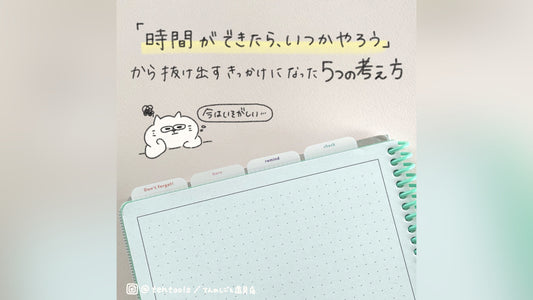What made me want to break out because it would be faster to do it myself
In the first place, when I wanted to break away from the idea that ``it would be faster to do it myself,'' my motivation was ``I wanted to get promoted.''
In order to get promoted, I wanted to take on a slightly bigger job than my current one, so I needed to start by handing over the tasks at hand to someone else or streamlining and simplifying them.
Even after I was promoted, I was assigned a job that had more responsibility than before and had a greater impact both inside and outside the company, so I needed to acquire the skill of ``handing over work to someone else.''
I believe that if we settle for the idea that ``it would be faster to do it ourselves,'' we would end up doing the same work forever, and we would miss out on growth and opportunities, so I decided to take this seriously.
Creating a manual
A manual is like a guidebook that summarizes the order of work, precautions, and operating methods, and is very useful when handing over work.
There are two main ways to use such a manual. The first is to create it yourself when you are taught a job, or have the person who taught you create it when you teach it to someone else.
Second, use it as a guide to reduce the risk of mistakes and avoid omissions in handovers.
We will explain in detail how to use it.
Create it when you learn a job, or have someone create it when you teach it
The most effective time to create a manual is right after learning.
When you learn a job from someone else, by creating a manual immediately afterward, you can make sure that there are no omissions or unclear points in the information that has been passed on.
I also feel like I can remember things faster because I simulate the work in my head by writing it down. (Experiences)
The most recommended thing is to have the other person create a manual when you take over or teach the work.
By looking at the manual created by the other person, you can check how much you understand and what is unclear, and you can re-teach them.
Many people who think it would be faster to do it themselves are probably not good at teaching. Please have your partner create a manual and review your own teaching methods.
Use it as a guide to reduce the risk of mistakes and avoid missing handovers, etc.
I think the original use of the manual is to use it as a guide.
If you just take over the work, people will come to you every time they have questions, and you might end up in a situation where they say, ``I told you this before! It would be faster if I did it.''
To prevent this from happening, by creating a manual, you can have a record of what you have taught once, and you can pass it on in fewer times and in less time.
Even if the person receiving the training is nervous at first, having the manual at hand will allow them to work with peace of mind, so it is recommended that you create a manual or have one prepared for you.





